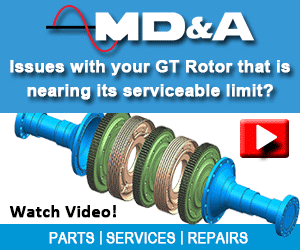 This session included a debate on the pros and cons of upgrading control systems versus retaining/maintaining legacy controls. Several users supported the idea of sticking with legacy systems because there’s a vibrant third-party supplier community available for support—including parts and knowledgeable technicians.
This session included a debate on the pros and cons of upgrading control systems versus retaining/maintaining legacy controls. Several users supported the idea of sticking with legacy systems because there’s a vibrant third-party supplier community available for support—including parts and knowledgeable technicians.
An operator with Mark VI controls said his plant upgraded to Mark VIe because of parts availability. Yet a recommendation from another participant was to keep spares of critical boards for Mark VIe and VIeS controls in-house because they are hard to find and lead times are long. Be prepared, he said.
Guidance offered to those considering new control systems included the following:
-
- When planning a rip-and-replace project, don’t forget the wiring, instrumentation, and other equipment that may not be included in the contractor’s scope of supply. And don’t chintz on the contingency because you will have discoverables.
- Expect issues with lengths of wiring requiring junction boxes and other connections.
- Think about routing wires under the subfloor.
- Always say “yes” to a factory acceptance test (FAT). Rigorously run through all the logic, graphics, etc, with supplier personnel. You can’t do this effectively in the field.
- Remember to double-check control constants after upgrading. Consider including this step in the FAT.
- All linear variable differential transformers (LVDTs), used for accurately measuring linear position or displacement, are not created equal. Check part numbers to be sure you have the correct spares. Also, install LVDTs in “friendly” locations to both minimize the potential for failures and to facilitate access.
- Servos impacted by varnish buildup is a perennial hot topic. A user said his plant came to expect trips because of varnish so they decided to change servos annually. Then they found the infant mortality rate was worse than expected so they went back to replacing servos when they fail.
- Dump-valve issues? Toggle the logic to be sure the valve is operating properly.
- Heads-up: Users say compressor bleed valves sent to shops for refurbishment sometimes are not reassembled correctly. Quality control should be stressed with suppliers and plant staff should verify correct assembly before the CBVs are transferred to your warehouse.
- Y&F 9500 combined stop/speed ratio and gas control valves were said to be robust, requiring little service. However, one attendee reported his experience with the OEM’s field service team on one valve was not up to par and recommended using Young & Franklin for the inspection and overhaul of its valves. Also mentioned was the importance of following packing procedures to the letter to prevent leak-by.
- Attention to detail when filing permits was stressed. One user noted that DLN tuning required after an outage was not specified in its permit. Ouch.
- Kudos: PSM received “likes” from several attendees for its LEC III™ low-emissions combustion system.





